Q
how to start Proton X50 engine
Starting up the Proton X50 is a total breeze. First off, make sure the gear's in Park (P) or Neutral (N), then hit the brake pedal, and just press the engine start button to fire it up. If you've got the smart key, no need to fumble around inserting it—just keep it on you, and the system’ll sense it automatically. A quick pro tip though: it’s a good idea to let the car run through its self-check before fully starting. Just press the start button without stepping on the brake, and the dashboard’ll light up showing all the indicator lights. Wait till that’s done before cranking the engine properly—it helps make sure everything’s in working order.
Under the hood, the X50’s packing a 1.5-liter turbo engine, which gives you plenty of pep while still being easy on fuel. When you’re driving day-to-day, skip the old habit of idling forever to "warm up" the engine. Modern engine tech doesn’t need that anymore. Once you start it, just give it a few seconds for the oil to circulate, then you’re good to go smoothly. Not only does this save gas, but it also cuts down on carbon buildup.
For our Malaysian friends, if you’ve left the car parked in the heat for a while, let it sit for a couple of seconds after starting to let the fuel system build pressure—that way, it’ll fire right up first try. And don’t sleep on regular maintenance, like changing the oil and spark plugs. That stuff’s key to keeping the engine starting strong every time.
Special Disclaimer: This content is published by users and does not represent the views or position of PCauto.
Related Q&A
Q
Does the Proton X50 have Android Auto?
Yes, the Proton X50 does support the Android Auto feature. Users can pair their Android phones with the vehicle's infotainment system via a USB cable, enabling them to use applications like navigation, music, and calls on the car's head - unit, which enhances driving convenience. Besides Android Auto, the Proton X50 is also compatible with Apple CarPlay to meet the needs of iPhone users. Its 7 - inch central control touchscreen offers smooth operation and an intuitive interface design, giving it a strong sense of technology.
It's worth mentioning that the addition of Android Auto and Apple CarPlay makes the X50 more competitive in terms of smart connectivity, especially appealing to the young consumer group in Malaysia. Moreover, the Proton X50 is also equipped with other practical features such as voice control, a rear - view camera, and multiple driving mode options, further enhancing the comfort and safety of daily driving.
If you have any questions about the specific operation or compatibility of the car's infotainment system, it is recommended that you visit an authorized Proton dealer to experience the vehicle's functions in person or refer to the official manual for more detailed usage instructions.
Q
Does the Proton X50 have a sunroof?
Yes, the Proton X50 is indeed equipped with a Panoramic Sunroof, which is a highlight feature of this model. It's especially available in higher - spec versions like the Premium and Flagship. This panoramic sunroof can offer passengers a broader view and better lighting inside the car.
The panoramic sunroof not only enhances the luxury feel of the interior but also adds to the driving pleasure during the night or on sunny days. However, it's important to note that proper maintenance of the sunroof is crucial. Regularly cleaning the tracks and seals can prevent water leakage and abnormal noises.
Given Malaysia's hot climate, it's advisable to use the sunshade when parking the car for an extended period to reduce the temperature rise inside. Meanwhile, the sunroof's UV - protection design can also safeguard passengers from direct sunlight.
As a popular SUV in the local market, the Proton X50 is well - received by consumers for its features and cost - effectiveness. The addition of the sunroof further boosts its appeal. If you're interested in this vehicle, you can visit a nearby Proton showroom to experience its performance firsthand.
Q
Does the Proton X50 have paddle shifters?
Yes, the Proton X50 comes with paddle shifters on certain models, especially the higher - spec versions like the 1.5 TGDi Flagship. This model is equipped with a 7 - speed Dual Clutch Transmission (DCT) and offers the paddle shifter feature, allowing drivers to manually control gear shifts, enhancing driving pleasure and handling flexibility.
The paddle shifters are usually located behind the steering wheel. Drivers can shift gears quickly without taking their hands off the steering wheel, which is especially useful when taking corners or overtaking. It's important to note that the functionality of the paddle shifters may vary depending on the vehicle's configuration. It's recommended to check the specific configuration list of the model before purchasing.
Moreover, while paddle shifters are a great addition to enhance the driving experience, for daily commuting, the automatic mode is usually sufficient. The manual mode is more suitable for those who seek a more engaging driving experience.
As an SUV targeting the young market, the Proton X50 has made many improvements in terms of technology and driving experience. The paddle shifters are just one of them. Other features such as the Advanced Driver Assistance System (ADAS) and intelligent connectivity functions are also worth paying attention to.
Q
Does the Proton X50 have wireless charging?
Yes, some high - end models of the Proton X50 are indeed equipped with a wireless charging function. This feature mainly appears in the Flagship and Flagship X versions, which allows car owners to wirelessly charge their Qi - standard - compatible phones. However, it's important to note that this function may not be applicable to all phone models, especially some older devices or those that don't meet the Qi standard.
As an SUV targeting the young market, the Proton X50 comes with quite a rich set of technological features. Besides wireless charging, it also has an advanced driver - assistance system, a full - LCD instrument panel, and an intelligent infotainment system. These features give it a good competitive edge among vehicles in the same class.
For Malaysian consumers, the addition of the wireless charging function does enhance the convenience of daily driving, especially during urban commutes as it reduces the hassle of dealing with cables. But if you're considering buying the X50, it's advisable to first check if your phone supports wireless charging or visit a showroom to personally experience whether this function meets your needs.
In addition, although wireless charging is convenient, its charging efficiency is usually a bit slower than that of wired charging. So, if you need a quick charge urgently, you may still have to use the traditional USB port.
Q
How much luggage can fit in the Proton X50?
The Proton X50 offers a 330-liter luggage compartment, which is ample for daily use. You can easily fit several small to medium-sized suitcases or shopping bags in it. This makes it highly practical for regular family outings or short trips. If you need more space, the rear seats can be folded down in a 60:40 split. Once folded, the cargo capacity gets a significant boost, making it suitable for transporting longer or larger items like golf bags or small pieces of furniture.
In Malaysia, the Proton X50's compact SUV positioning gives it an edge in city driving and parking, making it more maneuverable. At the same time, it doesn't compromise on practicality. The luggage compartment has a wide opening, making it easy to load and unload items.
It's worth noting that the actual loading capacity can be affected by the shape of the luggage and how it's arranged. We recommend that car owners plan their space usage wisely. If you often need to carry a large amount of stuff, you might want to consider adding a roof box or a luggage rack to increase the cargo capacity.
Overall, the Proton X50 strikes a good balance between daily convenience and occasional heavy-loading needs in its space design, making it a great fit for Malaysia's diverse driving scenarios.
Q
What is the max power of Proton X50?
The maximum power of the Proton X50 depends on the engine version you choose. Among them, the 1.5-liter turbocharged gasoline direct injection (TGDI) engine version can deliver a maximum power of 177 horsepower and a maximum torque of 255 Nm. While the 1.5-liter turbocharged multi-point injection (MPI) engine version offers a maximum power of 150 horsepower and a maximum torque of 226 Nm. Both of these two engine versions are paired with a 7-speed dual-clutch transmission (DCT), providing excellent power performance and fuel economy.
As a popular B-segment SUV among Malaysian consumers, the Proton X50 not only has strong power but also comes with a wealth of technological features, such as the advanced driver assistance system (ADAS) and smart connectivity functions, which meet the modern drivers' needs for safety and convenience. It's worth mentioning that the engine technology of the X50 comes from the cooperation between Geely and Volvo, ensuring its reliability and advancedness. At the same time, Proton has also made targeted adjustments for the local market, making it more suitable for the road conditions and driving habits in Malaysia.
For consumers who value power and technology, the X50 is undoubtedly a choice worthy of consideration. Especially among models in the same class, its cost - performance ratio is particularly outstanding.
Q
How heavy is Proton X50?
The weight of the Proton X50 varies according to different vehicle configurations. The curb weight is approximately between 1,300 and 1,350 kilograms, specifically depending on the selected powertrain version and additional features. For example, models with a 1.5L turbocharged engine are slightly heavier than the entry - level version. The weight design of this vehicle takes into account the rigidity and safety of the body structure while also considering fuel economy. It falls within a reasonable range among compact SUVs.
For Malaysian consumers, the X50 has a moderate weight. It can provide a stable driving experience without significantly increasing fuel consumption, making it highly suitable for urban commuting and family use. Additionally, the vehicle's weight affects its handling and cornering stability. The Proton X50 has achieved a good balance in this regard through chassis tuning and the application of lightweight materials, resulting in a more agile driving feel.
If you're particularly concerned about the vehicle's weight, it's recommended to pay attention to its performance on different road conditions during a test drive to better evaluate whether it meets your personal needs.
Q
Do Proton X50 and Proton X70 have the same engine?
Although both the Proton X50 and Proton X70 are SUV models under Proton, their engine configurations aren't exactly the same. The Proton X50 is equipped with a 1.5 - liter turbocharged three - cylinder engine, which comes in a regular version and a performance version (TGDI). The maximum power of these two versions is 150 horsepower and 177 horsepower respectively, and it's paired with a 7 - speed dual - clutch transmission.
On the other hand, the Proton X70 offers two engine options: a 1.8 - liter turbocharged four - cylinder engine and a 2.0 - liter naturally aspirated four - cylinder engine. The 1.8T version has a maximum power of 184 horsepower and is also equipped with a 7 - speed dual - clutch transmission.
The differences in the engine design of these two cars are mainly reflected in displacement, number of cylinders, and power tuning. The X50 focuses more on fuel economy and compactness, while the X70 leans towards power output and driving experience.
For Malaysian consumers, when making a choice, they can consider their own needs. If you're after something small, agile, and ideal for city commuting, the X50 is a great option. If you need more space and stronger power, the X70 is more suitable.
Moreover, both of these cars adopt the technology from the cooperation between Proton and Geely, ensuring reliability and after - sales service. It's recommended that you take a test drive at a dealership before purchasing to experience their actual performance.
Q
Is the Proton X50 2WD or 4wd?
The Proton X50 offers two drivetrain versions in the Malaysian market: front-wheel drive (2WD) and four-wheel drive (4WD), depending on the selected vehicle configuration. The entry-level 1.5T Standard and 1.5T Executive versions are equipped with a front-wheel drive system, while the higher-configured 1.5T Premium and 1.5T Flagship versions come with a four-wheel drive system. This design allows consumers to choose the appropriate drivetrain according to their budget and needs.
The four-wheel drive version provides better grip and stability on slippery roads or in complex terrains, making it suitable for areas with frequent rainfall or poor road conditions. On the other hand, the front-wheel drive version excels in fuel economy and daily city driving.
As a compact SUV, the Proton X50 is well - loved by Malaysian consumers for its stylish appearance, rich configurations, and diverse drivetrain options. It can handle both urban commuting and occasional outdoor adventures.
For consumers considering purchasing the X50, understanding the characteristics of different drivetrains can help them make a more suitable choice based on their personal usage scenarios. It is also recommended to experience the differences between the two drivetrain versions during a test drive to ensure choosing the most suitable model.
Q
What segment does Proton X50 belong to?
The Proton X50 belongs to the B-Segment vehicles. The B-Segment usually refers to the sub - market of compact SUVs. Generally, vehicles in this segment are relatively compact in size, which makes them well - suited for daily urban commuting and parking. The Proton X50 has a length of 4330mm, a width of 1800mm, a height of 1609mm, and a wheelbase of 2600mm. Its overall size falls within the scope of B - Segment vehicles. Vehicles in this class are favored by many consumers due to their good flexibility, relatively affordable prices, and low operating costs. The Proton X50 also participates in the competition in this sub - market with its own features and configurations, offering consumers diverse choices.
Latest Q&A
Q
Toyota Hiace how many seats
The Toyota Hiace is a staple in Malaysia's commercial and family vehicle scene, with seating options that vary by trim. The standard models, like the Hiace Van, typically offer 12 to 15 seats—perfect for commercial shuttle services or group outings. On the flip side, the more upscale variants such as the Hiace Super Grandia trim down to 9 to 11 seats, prioritizing comfort with premium upholstery and rear air-conditioning, ideal for family trips or business reception. It is worth noting that some aftermarket shops also offer custom seating configurations, such as adjusting to 13 seats or reducing to 8 seats to flexibly adapt to different uses. For Malaysian buyers, the Hiace's biggest draws are its legendary durability, high ground clearance that handles local road conditions like a champ, and wallet-friendly maintenance costs. The diesel engine variants, in particular, stand out for their impressive fuel efficiency. For the most accurate specs, though, your best bet is to hit up a Toyota Malaysia authorized dealer. They can walk you through the latest model year details, including safety features like ABS and dual airbags—stuff that could definitely sway your final purchase call.
Q
How many models does Toyota Hiace have
The Toyota Hiace is a total workhorse and family favorite here in Malaysia, killing it in both commercial and personal use. You’ll mainly find a few go-to variants cruising our roads: the standard Hiace Van, the Hiace Commuter (that’s the people-hauler), and the top-dog Hiace Super Grandia (the luxury liner). These aren’t just badge swaps—they’re built for different jobs. The Hiace Van? It’s all about getting cargo from A to B, no frills, just space. But the Commuter and Super Grandia? They’re where comfort takes the wheel, packing nicer seats, better air-con, and all that extra kit to keep passengers happy.
Under the hood, Toyota’s got you covered with diesel and petrol engine options, so whether you’re after torque for heavy loads or something smoother for daily drives, there’s a Hiace for that. Malaysians swear by this van for a reason—its legendary durability and rock-solid resale value are huge wins. Plus, that cavernous interior and flexible seating? Perfect for everything from running a business to shuttling the whole family (and then some).
If you’re thinking of adding a Hiace to your fleet or driveway, do yourself a favor: figure out what you’ll *really* use it for, then hit up your nearest authorized dealer for a test drive. Trust me, you’ve gotta feel that space and drive to get the full picture.
Q
Mitsubishi Xpander made in which country
The Mitsubishi Xpander is a multi-purpose vehicle (MPV) primarily built in Indonesia, rolling off the lines at Mitsubishi Motors' local plant there. Since its launch back in 2017, this people-mover has struck a chord in Southeast Asian markets – Malaysia included – thanks to its roomy interior and all-around practicality.
The Xpander's design does a neat job balancing the agility needed for city hops with the space requirements of family getaways. Under the hood, you'll find a 1.5-liter MIVEC engine, which delivers smooth power and decent fuel efficiency – perfect for Malaysia's varied road conditions, whether you're navigating city streets or hitting the highway.
What really makes it stand out for Malaysian families, though, are those thoughtful touches: the generous ground clearance that handles those unexpected potholes, and the super flexible seating arrangements that let you juggle passengers and cargo with ease. Being purpose-built for Southeast Asia, the Xpander nails the local adaptations. Think a robust air conditioning system that laughs at our tropical heat, and interior materials that can take the daily grind – little wonder it's a top pick among Malaysian buyers.
If the Xpander has piqued your interest, swing by your nearest Mitsubishi dealership for a test drive. There's no better way to get a feel for how it drives and just how practical it really is.
Q
how many seater is Mitsubishi Xpander
The Mitsubishi Xpander has carved out a solid following in Malaysia's MPV scene, and it's easy to see why. This 7-seater is a hit with families, thanks to its roomy interior and smartly designed, flexible seating. The 2+3+2 layout works well – the second row slides back and forth to free up legroom, while the third row is perfect for kids or adults on shorter trips. Need more cargo space? Just fold those rear seats down, and you've got plenty of room for whatever you're hauling.
Under the hood, there's a 1.5-liter MIVEC naturally aspirated engine, paired with either a 4-speed auto or 5-speed manual gearbox. It's not about speed here; it's about that smooth, easy drive for daily use and keeping fuel costs in check – exactly what family buyers want.
Practical touches don't stop there. You get handy features like a multifunction steering wheel, a touchscreen infotainment system, and a reverse camera, all of which make life behind the wheel that bit easier.
What really makes the Xpander stand out in Malaysia, though, is its whole package. It's priced reasonably, Mitsubishi's known for building reliable cars, and their after-sales network here is pretty extensive. If you're a consumer who prioritizes space and getting good value for your money, this is a solid pick in the practical family MPV segment.
Q
how much is the Mitsubishi Xpander
The Mitsubishi Xpander's pricing in Malaysia varies depending on the trim level and specifications. The entry-level Xpander Standard starts at approximately RM92,890, while the higher-spec Xpander Premium comes in at around RM99,890. Actual prices may fluctuate based on dealer promotions or optional extras selected. This 7-seater MPV has struck a chord with local families thanks to its spacious interior, practicality, and strong value for money. Under the hood, you'll find a 1.5L MIVEC naturally aspirated engine churning out 105PS and 141Nm, paired with a 4-speed automatic transmission. Fuel efficiency is rated at around 6.6L/100km. Convenience features include LED daytime running lights and power-folding side mirrors.
Notably, the Xpander boasts a generous 205mm of ground clearance, making it better suited than your average MPV for those rougher patches of road you might encounter around Malaysia. Its "Dynamic Shield" family face also gives it a distinct and recognizable look on the road. When considering rivals in the same segment, the Toyota Avanza or Honda BR-V might come to mind, but the Xpander holds an edge in terms of third-row space and cargo-carrying versatility. It's always a good idea to head down to an authorized showroom for a test drive to get a real feel for how it handles, and to check out the latest promotions – things like low-interest financing or complimentary service packages could sweeten the deal.
View MoreRelated News

The all-new Proton X50 has sold over 6,000 units in a month and a half since its launch, becoming the champion in its segment.
RobertSep 18, 2025

2025 Proton X50 launched for 5 days and has received 8,000 orders, with 999 units delivered
RobertAug 1, 2025
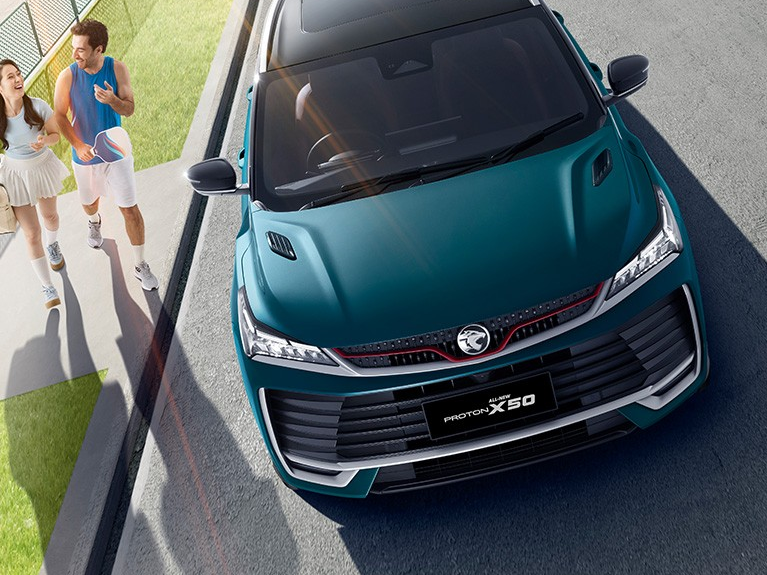
2025 Proton X50 Facelift Debuts with New 1.5L Four-Cylinder, Priced from RM89,800
AshleyJul 28, 2025
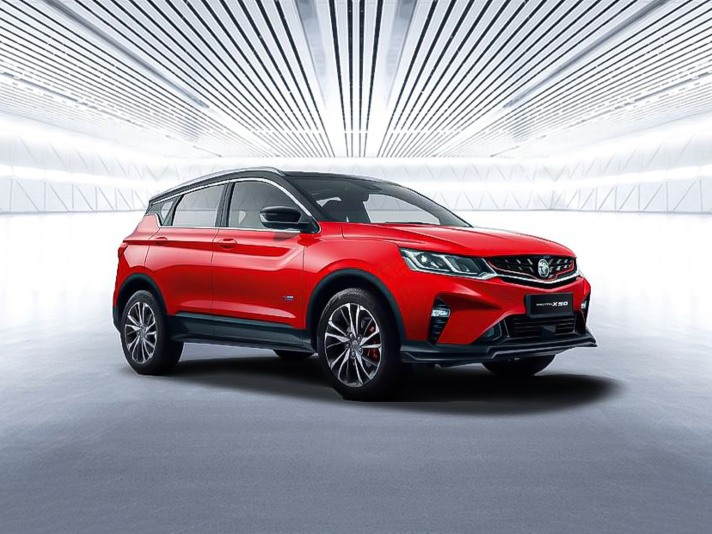
Proton X50 Interior Revealed: A Practical Space Designed for Young Drivers
LienJul 3, 2025
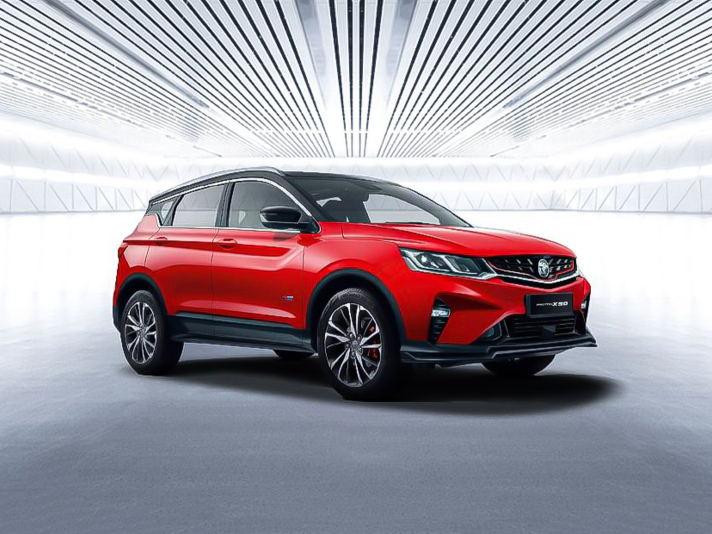
2025 Proton X50 Facelift: Major Upgrades & Possible 4-Cylinder Engine!
RobertJun 13, 2025
View More












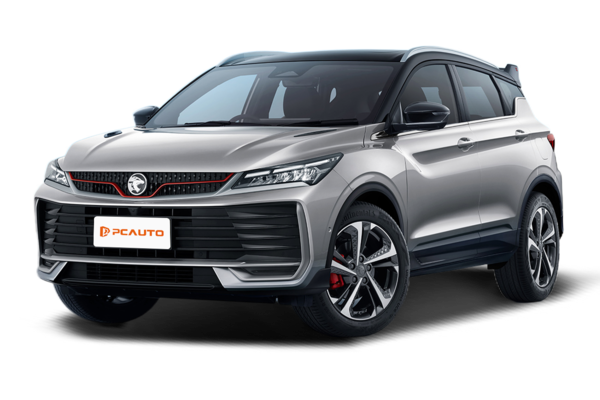




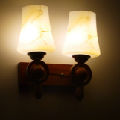
Pros
Cons